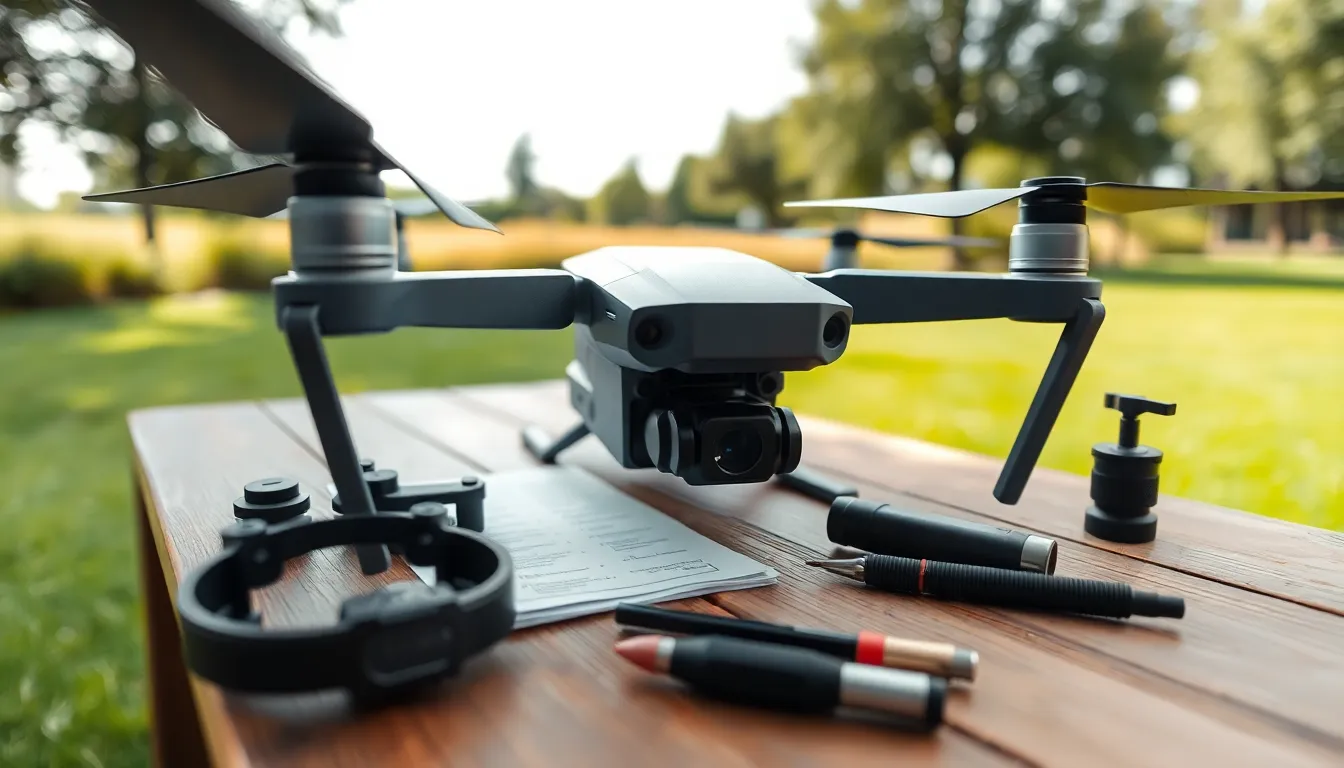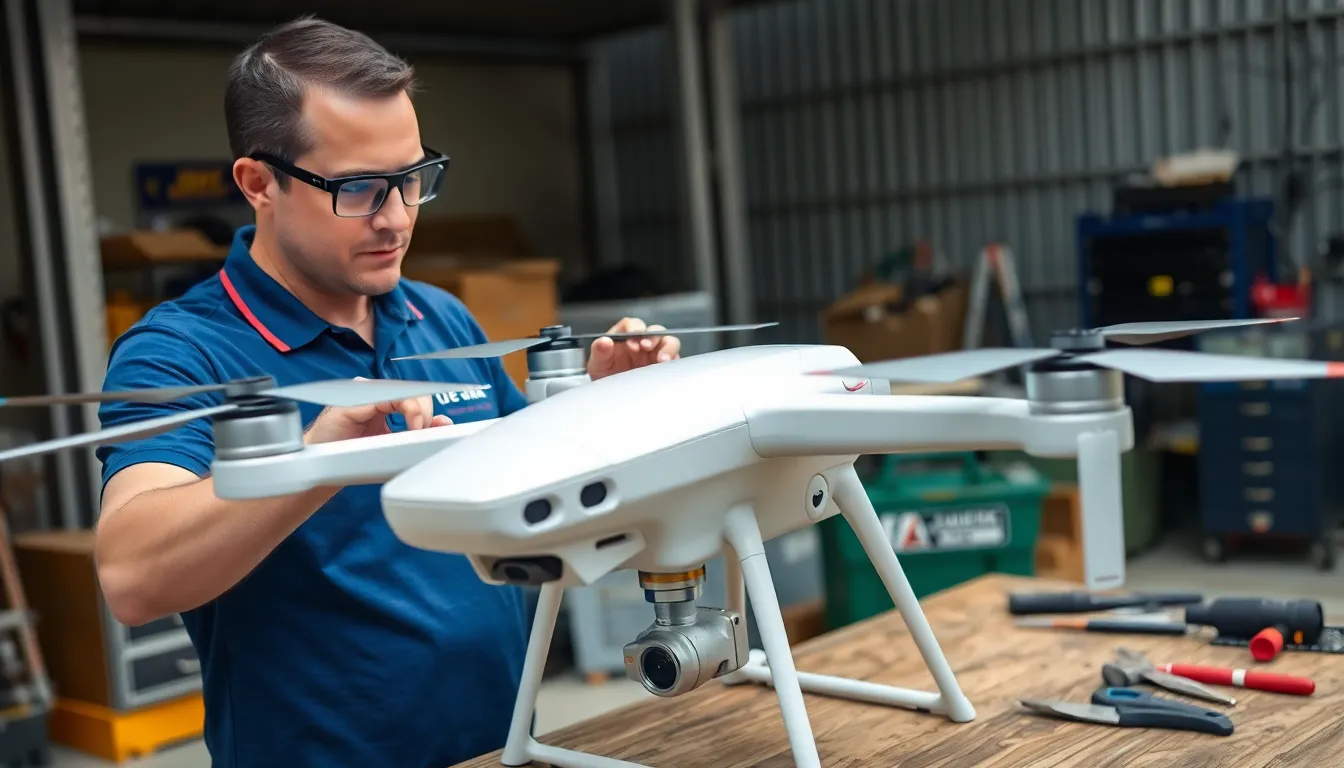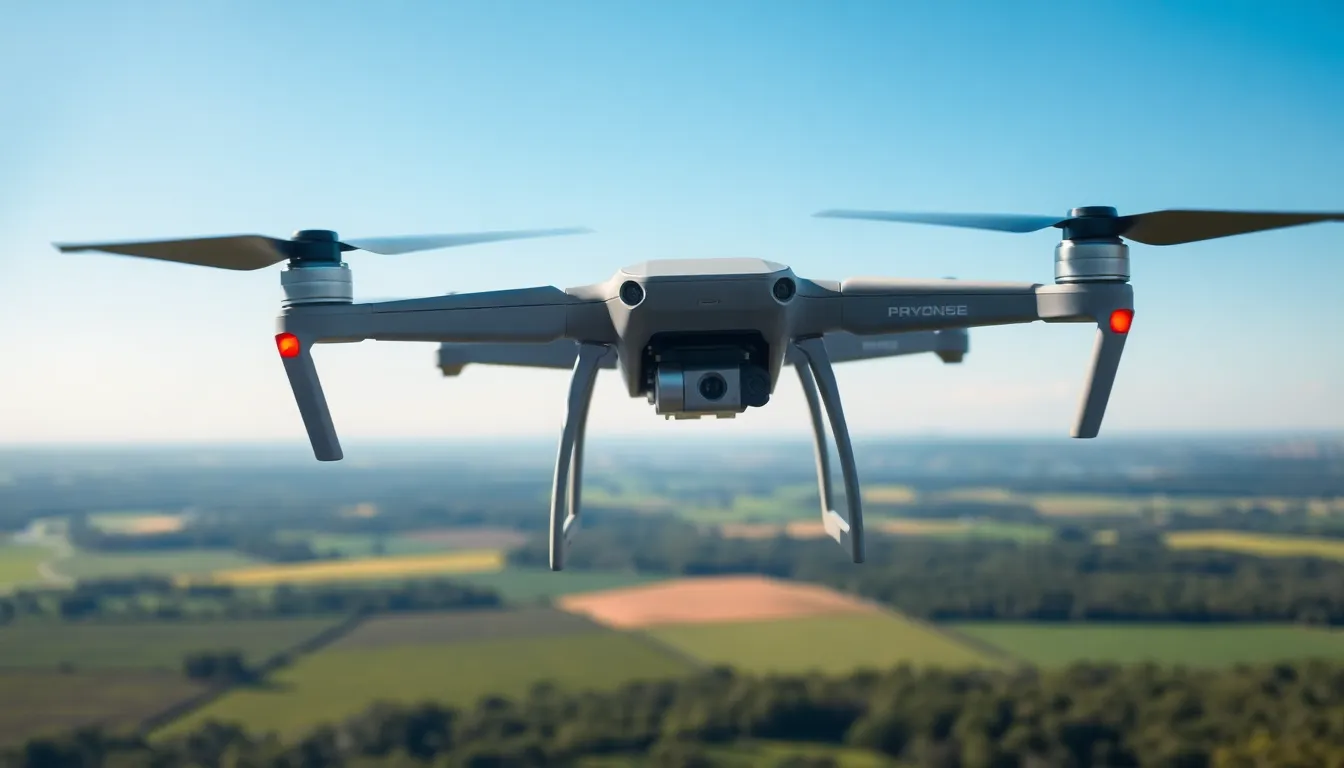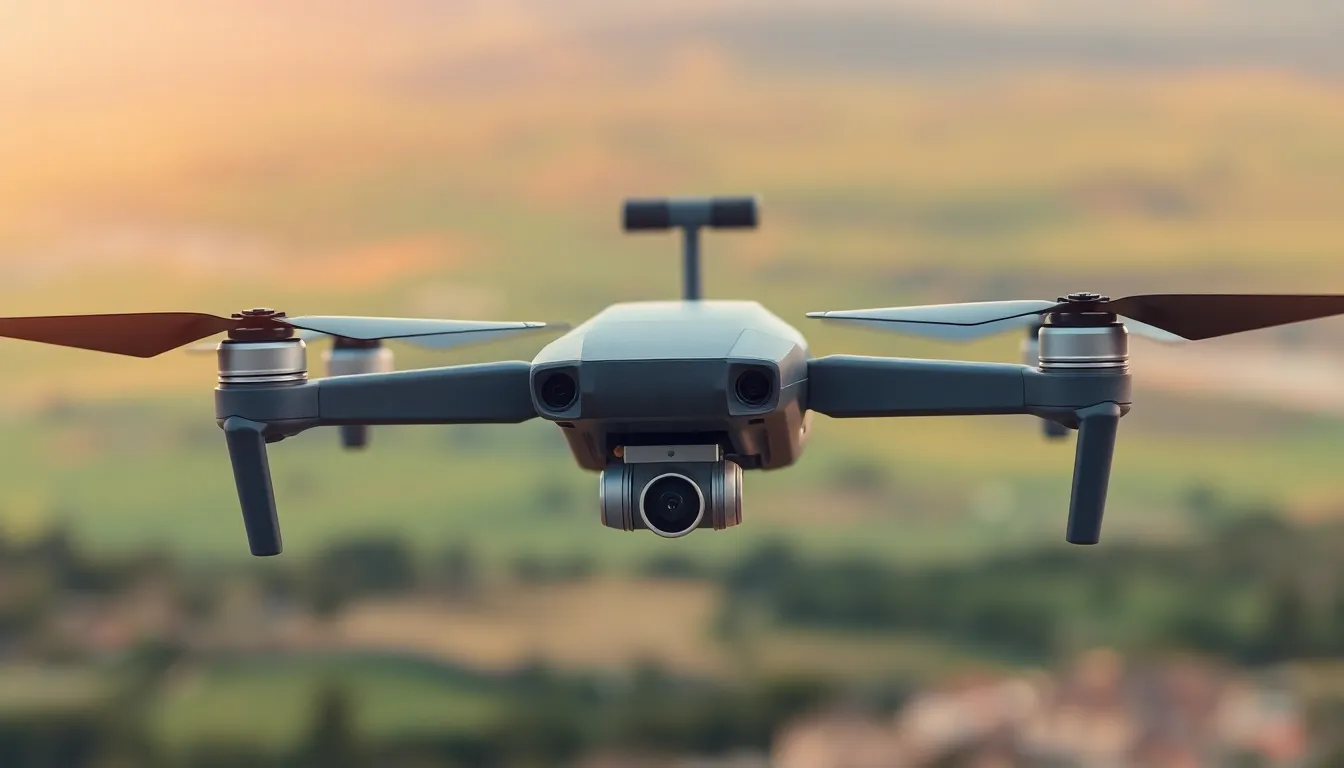Drones are the modern-day superheroes of the skies, swooping in to capture breathtaking views and deliver packages with precision. But even superheroes need a little TLC. To keep these flying marvels in tip-top shape, a solid maintenance checklist is essential. After all, nobody wants their drone to take an unscheduled nosedive during a critical mission.
Table of Contents
ToggleImportance Of A Drone Maintenance Checklist
A well-structured drone maintenance checklist is essential for optimal operation and longevity. Regular checks prevent issues and ensure reliability during critical missions.
Ensuring Safety
Safety relies heavily on regular maintenance checks. Operating a drone without thorough inspections increases the risk of malfunctions. Components such as propellers, batteries, and motors require routine evaluation. Inspecting these parts helps identify wear and tear early. Correct maintenance practices significantly reduce the likelihood of accidents. Pilots who follow a checklist promote safe flying conditions. Ensuring that all systems function properly enhances overall flight safety. Scheduled maintenance checks also comply with aviation regulations and standards.
Enhancing Performance
Boosting performance involves consistent maintenance efforts. A drone that receives proper care operates more efficiently, delivering better results. Regularly servicing the battery results in extended flight times. Examining the firmware allows pilots to benefit from the latest updates. Checking for loose connections or damaged components facilitates smoother operations. A meticulous maintenance regimen increases responsiveness and agility in aerial maneuvers. Pilots who prioritize maintenance witness improved image quality and data collection. Well-maintained drones provide a reliable platform for various applications.
Key Components Of A Drone Maintenance Checklist

Maintaining drone efficiency hinges on three key inspection types: pre-flight, post-flight, and scheduled maintenance. Each component plays a critical role in ensuring reliable operations and optimal performance.
Pre-Flight Inspections
Pre-flight inspections focus on ensuring drone safety and operational readiness. Examine propellers for damage or debris, as these parts directly affect flight stability. Check battery levels and connections; inadequate power supply can lead to unexpected mid-air failures. Verifying the camera and gimbal functionality also enhances image capture quality. Ensure firmware updates are installed before flights, as this maximizes performance with the latest features. Communicating flight location also contributes to a safe operating environment.
Post-Flight Inspections
Post-flight inspections concentrate on evaluating drone wear and performance after each flight. Inspect propellers for any signs of wear or cracks; these can compromise drone functionality in future flights. Examine the battery for swelling or overheating; this ensures safety during charging and storage. Reviewing flight logs can highlight any unusual behavior or error messages that occurred during operation. Cleaning the drone after each flight prevents dirt or debris accumulation, prolonging the life of electronic components. Identifying issues promptly minimizes potential risks and prepares the drone for future missions.
Scheduled Maintenance
Scheduled maintenance establishes routine checks tailored to a drone’s specifications and usage patterns. Following the manufacturer’s guidelines ensures all components, including motors and sensors, receive thorough evaluations as needed. Regularly calibrating the drone’s sensors after a set number of flights enhances accuracy during operations. Keeping records of all maintenance activities can identify recurring issues and provide insights over time. Setting a schedule based on flight hours or calendar intervals prevents unexpected failures and ensures ongoing reliability. Drones benefit significantly from these proactive measures, supporting long-term efficiency and safety.
Creating An Effective Drone Maintenance Checklist
A well-thought-out maintenance checklist is crucial for optimal drone performance. It streamlines inspections and ensures reliability in various tasks.
Tailoring To Your Drone Model
Understanding specific drone models leads to more effective maintenance. Each drone features unique components that demand tailored checks. Operators should consult manufacturer guidelines detailing recommended maintenance tasks. For instance, some drones may require more frequent battery inspections than others. Customizing the checklist according to model specifications enhances operational safety and extends lifespan. Identifying particular areas for attention helps prevent unexpected failures and optimizes performance.
Frequency Of Checks
Establishing a routine for inspections enhances drone reliability. Regular pre-flight checks should occur before each flight to guarantee operational safety. Post-flight evaluations require immediate assessment to address potential issues. Scheduled maintenance plays a vital role, with recommended intervals typically ranging from weekly to monthly based on usage. Keeping accurate records of these inspections allows operators to monitor trends and adjust check frequencies as necessary. Consistency in checks contributes significantly to maintaining drone efficiency and safety in various applications.
Tips For Following A Drone Maintenance Checklist
Following a drone maintenance checklist maximizes efficiency and safety during operations. Adhering to specific guidelines guarantees thorough evaluations of various components.
Utilizing Technology
Incorporating apps and software streamlines the maintenance process. Many tools offer reminders for inspections and scheduled maintenance. Using diagnostic tools can reveal issues before they escalate. Integrating real-time monitoring systems keeps operators updated on drone performance. These systems analyze parameters like battery health and motor functionality, enhancing overall reliability.
Keeping Records
Maintaining detailed records is crucial for understanding a drone’s maintenance history. Creating logs for each inspection helps track recurring issues and repair patterns. Recording flight hours and conditions assists in identifying optimal maintenance intervals. Operators should include dates, findings, and any corrective actions taken. Historical data supports informed decision-making regarding future maintenance needs. Regularly reviewing these records can improve operational practices and extend the lifespan of equipment.
Maintaining a drone is essential for ensuring its reliability and performance. A well-executed maintenance checklist not only enhances safety but also prolongs the life of the equipment. By incorporating pre-flight, post-flight, and scheduled inspections, operators can identify potential issues before they escalate.
Utilizing technology for reminders and diagnostics can streamline the maintenance process. Keeping detailed records of inspections and flight conditions allows for better decision-making regarding maintenance intervals. Ultimately, a commitment to regular maintenance leads to improved flight efficiency and safer operations, making drones a dependable tool in various applications.





